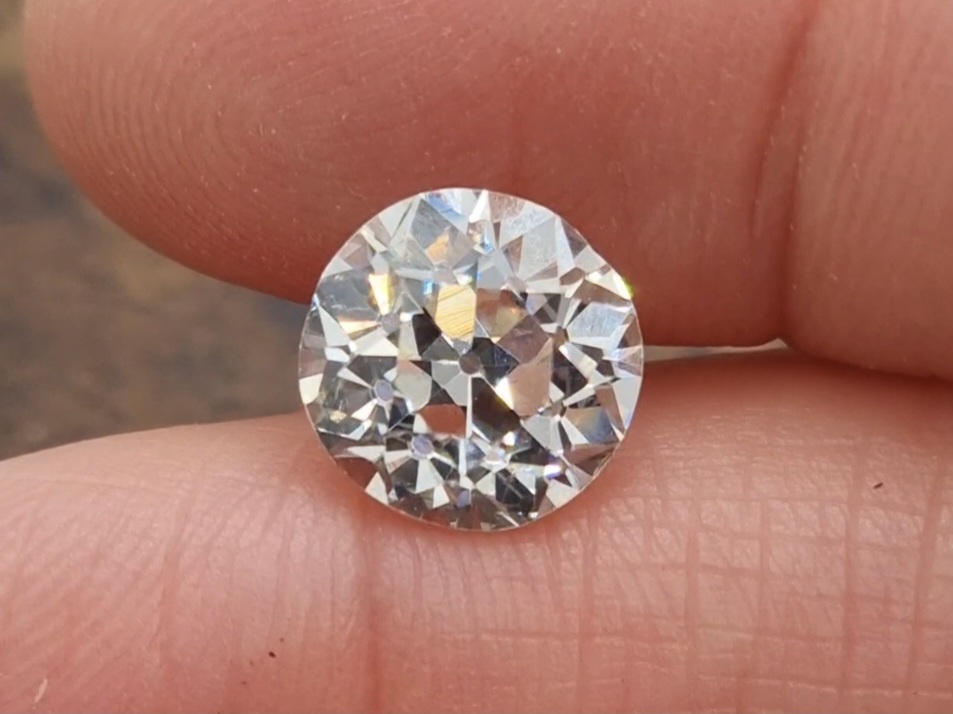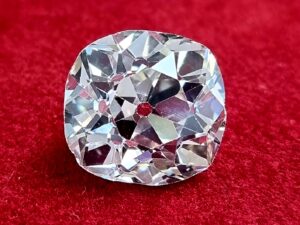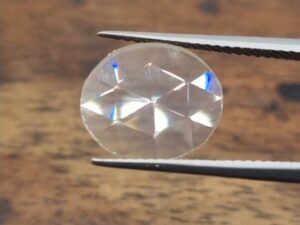Explore the fascinating world of Old European Cut diamonds in this comprehensive article. Learn about their unique characteristics, history, and how they differ from modern cuts. This post aims to provide valuable insights for anyone interested in these antique gems. Let’s dive in.
Table of Contents
The Origin of Old European Cut Diamonds
The Old European Cut Diamond has a rich history that dates back to the late 19th and early 20th centuries. This cut served as a transition between the “Old Mine Cut,” which was popular in the 18th and 19th century, and the modern Round Brilliant Cut that we are familiar with today. The Old European Cut was developed in an era when diamond cutting technology was evolving but still relied heavily on the skill and intuition of the artisan.
Unlike modern diamonds, which are cut using advanced machinery for precision, Old Euro’s were primarily hand-cut. The focus was less on mathematical proportions and more on the individual characteristics of each rough diamond. This resulted in stones with a unique charm, often featuring higher crowns, smaller tables, and broader facets compared to modern cuts.
The Old European Cut was developed in Europe, as the name suggests, and was the go-to choice for many exquisite pieces of jewelry from the Victorian, Edwardian, Art-Deco and Art Nouveau periods. Its romantic glow and vintage appeal have made it a sought-after choice for those looking for something that stands out from contemporary cuts.
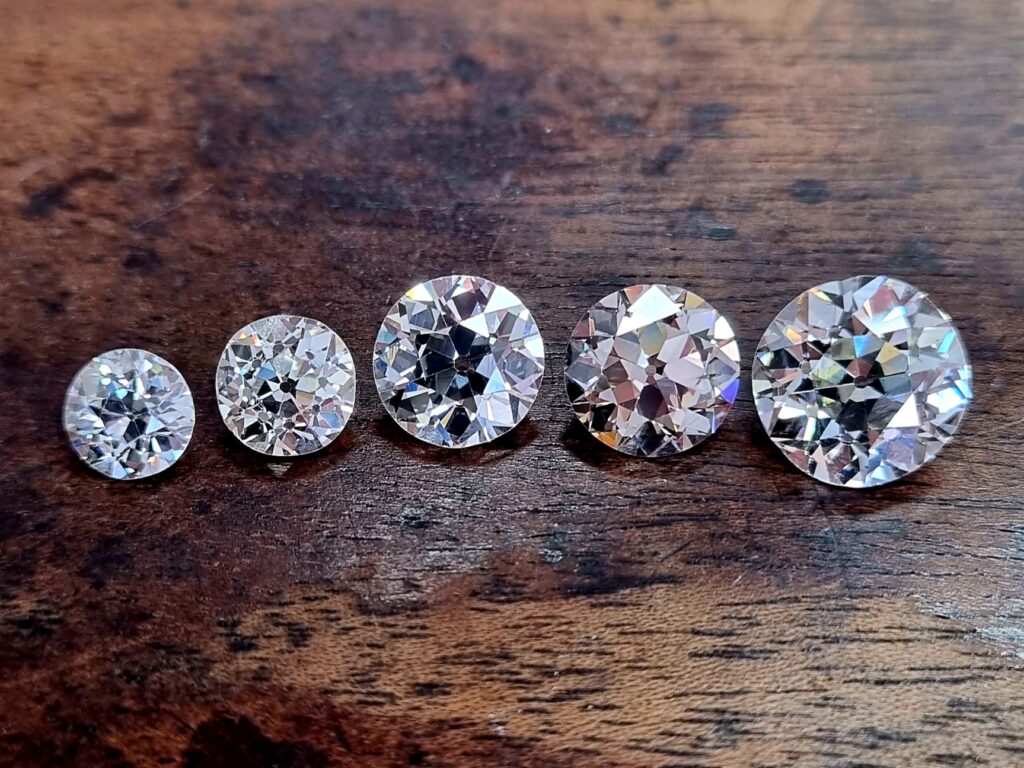
Characteristics of Old European Cut Diamonds
When it comes to the Old European Cut, the characteristics that define it are quite distinct from modern diamond cuts. This cut typically features a circular shape, a very small table, a high crown, and a noticeable “open” culet. If you’re unfamiliar with these terms, you may find it helpful to refer to my post on the “Anatomy of a Diamond: Modern and Antique” for a more detailed explanation.
The Old European Cut usually has 58 facets, similar to a modern Round Brilliant, but the arrangement and size of these facets are what set it apart. The larger, chunkier facets are designed to maximize the diamond’s performance in lower light conditions, which was common in the era when this cut was popular.
Unlike modern diamonds, which are cut for precision and brilliance, each Old European Cut diamond was hand-cut. Artisans of the time were often guided more by the natural shape of the rough stone than by geometric calculations, resulting in a unique facet structure that imparts a softer, more mellow glow to the stone.
If you’re interested in how this cut evolved, my post on “The History of Diamond: An In-Depth Guide” offers a comprehensive look. For comparisons with other antique cuts, you may find “The Old Mine Cut” useful.
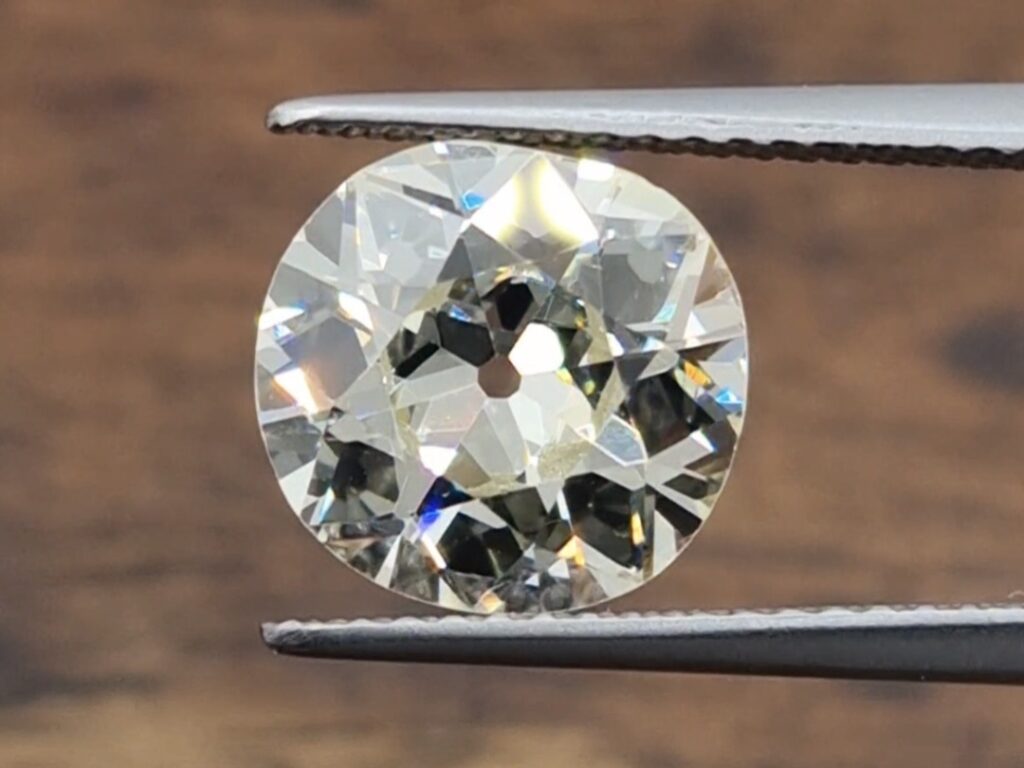

Old European Cut vs. Modern Cuts
When comparing Old European Cut diamonds to modern cuts, several key differences become apparent. These differences are not just in appearance but also in the way they interact with light, their historical context, and even how they are graded.
- Brilliance: Modern cuts, particularly the Round Brilliant, are designed to maximize brilliance—that is, the amount of light reflected back to the viewer. Old European Cuts, on the other hand, offer a different kind of brilliance, often described as a “vintage” or “softer” sparkle.
- Facet Structure: Modern cuts usually have small symmetrical facets and are cut with mathematical precision for optimal light performance. Old European Cuts have less precise, larger facets, which give them a distinct, less “busy” appearance.
- Table and Crown: Modern cuts often have a larger table and a flatter crown, while Old European Cuts feature a smaller table and a higher crown. This contributes to the depth and unique brilliance of the Old European Cut.
- Culet: In modern cuts, the culet is typically either small or pointed, making it less visible. Old European Cuts often have an open polished culet, which can be seen when looking directly into the stone.
- Grading: Modern cuts are graded on a variety of parameters, including cut, color, clarity, and carat weight. Old European Cuts are normally not graded for cut by major gemological labs like the GIA, as they predate the modern grading system.
- Historical Context: Old European Cuts carry with them a sense of history and craftsmanship that is less prevalent in mass-produced modern cuts.
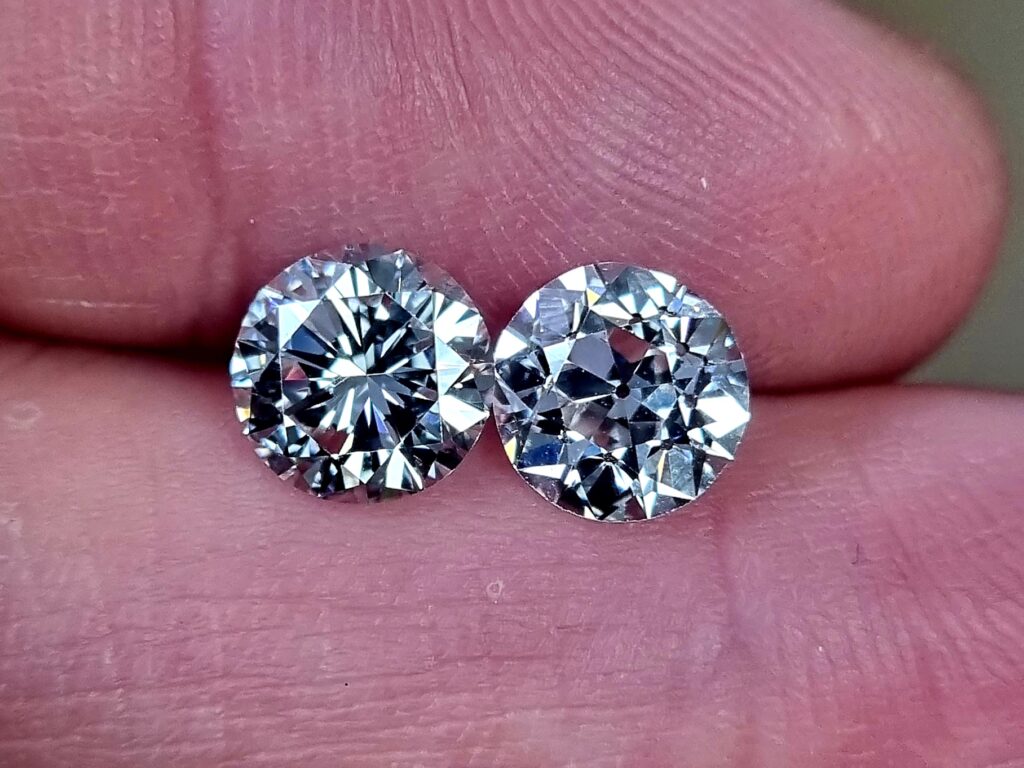
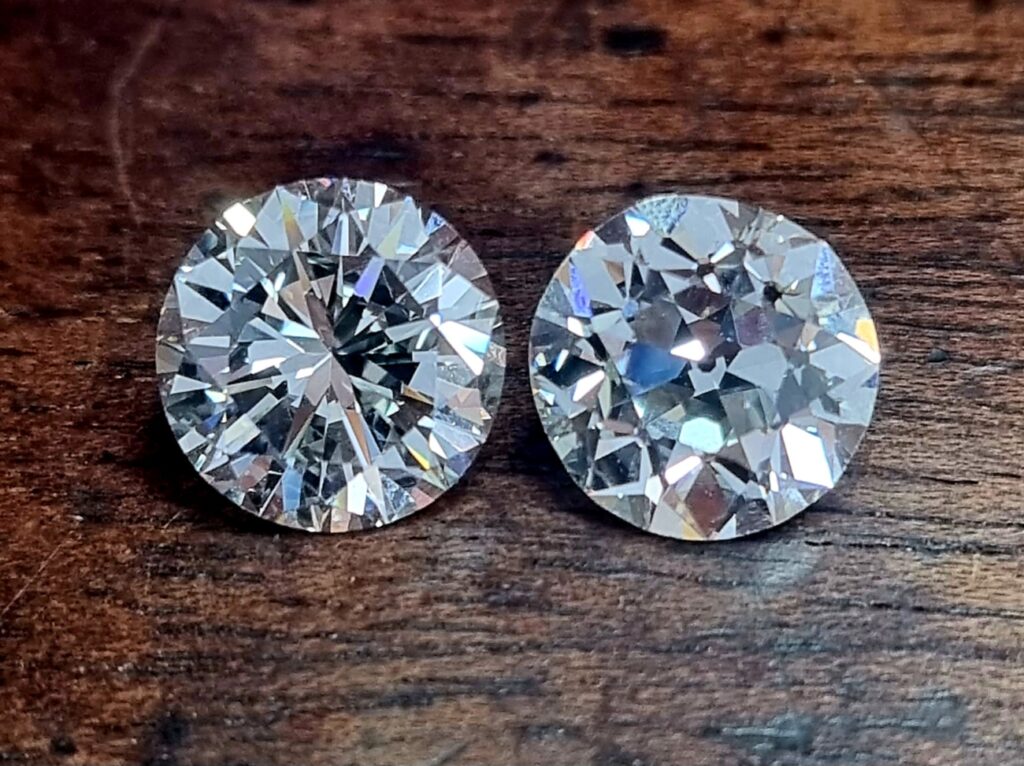
The Grading of Old European Cut Diamonds
Grading Old European Cut diamonds is a nuanced process that differs significantly from the grading of modern cuts. While modern diamonds are evaluated based on a standardized set of criteria, Old European Cuts often defy these norms due to their unique characteristics and historical context.
- Cut Grading: One of the most notable differences is that Old European Cuts are generally not graded for their cut by major gemological labs like the GIA. This is because the criteria for cut grading were established long after these diamonds were created.
- Color and Clarity: The color grading system used for modern diamonds may not be directly applicable to Old European Cuts. Interestingly, these antique diamonds often appear much whiter when viewed face-up, thanks to their unique proportions and facet structure. Clarity grading also takes into account the diamond’s unique characteristics such as signs of age.
- Signs of Age: Old European Cut diamonds often bear signs of age, such as micro-scratches or minor chips. These easily repairable external defects may not be noticeable without 10x magnification and serve as proof of the diamond’s historical age. It is generally advisable to leave these features intact.
- Carat Weight: The carat weight of an Old European Cut diamond is still a significant factor in its value. However, these diamonds are often found in a range of sizes that may not conform to modern standards (such as round carat weights of 1.01ct or 2.05ct)
- Certification: If you’re considering purchasing an Old European Cut diamond, it’s advisable to look for a certificate from a reputable lab. While they may not grade the cut, they will provide valuable information on the diamond’s color, clarity, and carat weight.
- Provenance: The history of an Old European Cut diamond can also play a role in its grading. Diamonds with a well-documented history or those that have been part of significant collections may carry a premium.
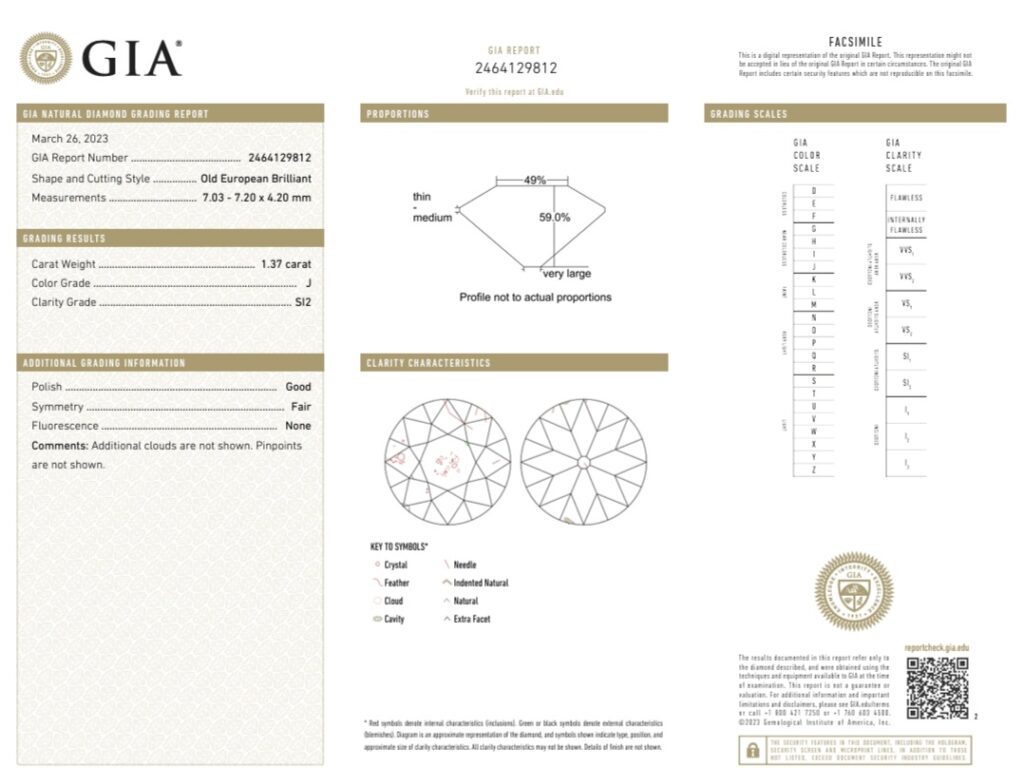
The Market for Old European Cut Diamonds
The market for Old European Cut diamonds has seen a resurgence in recent years, driven by a growing appreciation for vintage and antique jewelry. These diamonds are highly sought after for their unique aesthetic and different play of light. For an in-depth look at the investment value of Old Cut Diamonds you can take a look at this article: “Investment Potential of Antique Diamonds”.
Demand and Supply
The demand for Old Euro’s often outstrips the supply, making them a valuable asset. Unlike modern diamonds, which are abundant in the market, Old European Cuts are increasingly rare, especially in larger sizes or higher quality grades.
Pricing
When it comes to pricing, Old European Cut diamonds can sometimes command a premium due to their scarcity and unique characteristics. However, prices can vary widely depending on factors such as color, clarity, and overall condition of the stone.
Where to Buy
Old European Cut diamonds are commonly found in estate sales, auctions, and specialized vintage jewelry stores or by modern jewelers using antique diamonds. Online platforms such as Instagram also offer a wide selection, but it is essential to buy from reputable dealers to ensure authenticity.
Investment Value
Given their rarity and the growing interest in antique jewelry, Old European Cut diamonds can be a good investment. However, it’s essential to have a thorough understanding of their grading and market value, which can differ significantly from modern cuts.
Customization
One of the appealing aspects of Old European Cut diamonds is the ability to set them in both vintage and modern settings, offering a wide range of customization options for jewelry designers and consumers alike.
Conclusion
Understanding the allure and intricacies of Old European Cut diamonds is more than just a lesson in gemology; it’s a journey through history, craftsmanship, and timeless beauty. These unique diamonds, with their distinct facet structure and vintage glow, have captured the hearts of collectors, investors, and romantics alike. Whether gracing royal collections, setting records at auctions, or simply adding vintage charm to modern jewelry, Old European Cut diamonds continue to be a sought-after gem in today’s market.
As the demand for these diamonds grows, so does the importance of understanding their grading, characteristics, and market value. Whether you’re a seasoned collector or a first-time buyer, knowledge is your best asset.
Additional Resources
- Gemological Institute of America (GIA): The GIA offers a wealth of information on diamond grading and characteristics. Visit their website
- HRD Antwerp: A leading authority in diamond certification, HRD Antwerp offers valuable insights into the grading and evaluation of antique diamonds. Check out their website
- “Diamonds: An Early History of the King of Gems” by Jack Ogden: This book provides an in-depth look into the history of diamonds, including antique cuts. Find it on Amazon
- “The Nature of Diamonds” by George E. Harlow: This book covers the geological aspects of diamonds and offers a historical perspective. Find it on Amazon
- “Diamond Cuts in Historic Jewelry – 1381 to 1910” by Herbert Tillander: This book is a comprehensive guide to understanding the evolution of diamond cuts through history.
- “Diamond Design” by Marcel Tolkowsky: A seminal work that laid the foundation for modern diamond cutting techniques. Find it on Amazon
- “Gems: Their Sources, Descriptions and Identification” by Robert Webster and Peter Read: This book offers a broad overview of various gemstones, including diamonds. Find it on Amazon
- “The Book of Diamonds” by Joan Y. Dickinson: A general guide that covers everything you need to know about diamonds. Find it on Amazon


